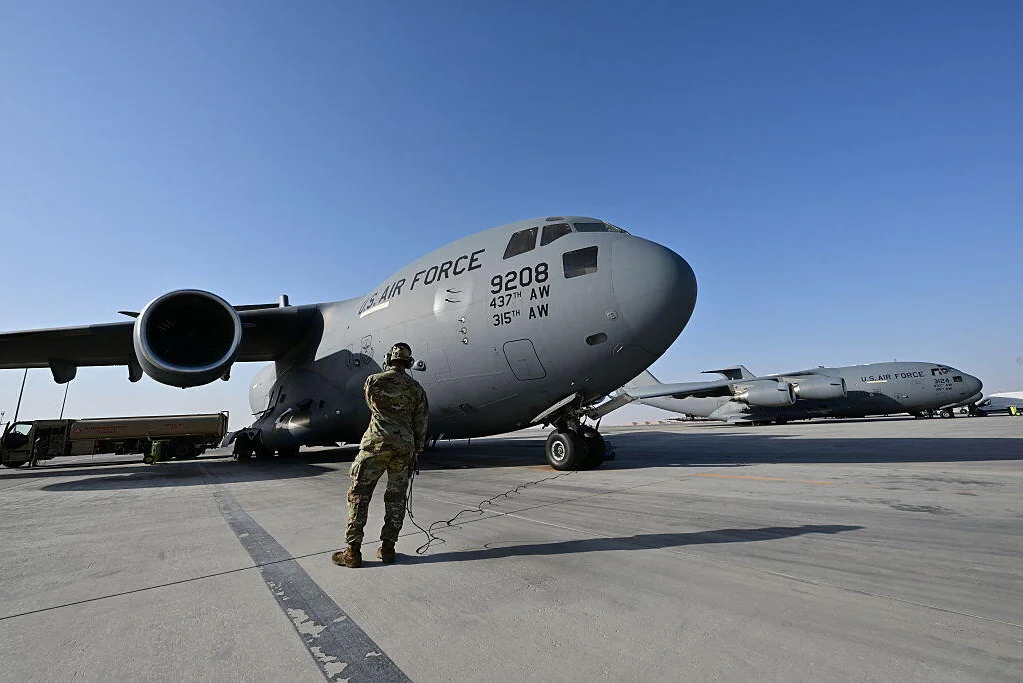US drone strikes in Somalia 2025 trace their lineage to nearly two decades of evolving drone doctrine in the Horn of Africa.
The catastrophic 1993 Black Hawk Down mission made Somalia a cautionary tale for US interventionism. Yet, September 11 attacks recast the failed-state narrative into a counter-terrorism imperative.
By 2007, Somalia became the first African nation hit by a post-9/11 US drone strike, inaugurating an air-campaign approach that has steadily expanded under four successive administrations.
US Drone Strikes in Somalia by Numbers from 2001 to 2025
| Administration | Years in Office | Confirmed Strikes | Average Strikes/Year | Civilian Deaths* |
|---|---|---|---|---|
| George W. Bush | 2001-2008 | 11 | 1.4 | 6-10 |
| Barack Obama | 2009-2016 | 40 | 5.0 | 20-52 |
| Donald Trump – 1st Term | 2017-2020 | 219 | 54.8 | 82-110 |
| Joe Biden | 2021-2024 | 51 | 12.8 | 18-30 |
| Donald Trump – 2nd Term (Jan–May 2025) | 5 months | 43 | >100† | 7-15 |
*Civilian estimates combine New America & Airwars ranges.
†Annualized rate if the pace continues.
AFRICOM’s open-source data shows that US drone strikes in Somalia 2025 have more than doubled compared with the same period in 2024—positioning the new year to become the deadliest for aerial operations since records began.
Strategic Drivers of Escalating US Drone Strikes in Somalia
IS-Somalia’s Transnational Network
Puntland’s rugged Golis Mountains host IS-Somalia, now designated by US intelligence as a key conduit for global ISIS financing and training.
Treasury officials cite crypto-currency transfers and illicit charcoal exports funneled through Bosaso port—factors behind at least 23 precision strikes this year.
Al-Shabab’s Counter-Offensive Near Mogadishu
- January–April 2025: Al-Shabab reclaimed 37 towns across Middle Shabelle.
- February 2025: Fighters advanced within 60 km of Mogadishu, erecting checkpoints on arterial roads.
- Result: AFRICOM authorized “defensive strikes,” including an April 12 raid that reportedly killed senior field commander Yusuf Jiis al-Shabab.
Low-Risk Power Projection for Washington
Analysts call Somalia a “perfect storm” for Washington’s over-the-horizon doctrine:
- High firepower: MQ-9 Reapers armed with AGM-114 Hellfires.
- Low oversight: Classified rules of engagement loosened from Obama-era standards.
- Minimal US casualties: No boots on the ground outside secure bases in Djibouti and Kenya.
Civilian Harm, Accountability, and International Law
Despite Pentagon claims of precision, watchdog Airwars attributes 33-167 civilian deaths to US drone strikes in Somalia since 2007—numbers the Somali government calls “conservative.”
Critics highlight:
- Opaque Investigations: AFRICOM rarely publishes after-action reports.
- Zero Compensation: Victims’ families have yet to receive condolence payments.
- Legal Ambiguity: The 2001 AUMF—meant for al-Qaeda—remains the primary legal cover.
Rights groups argue that every unacknowledged fatality provides al-Shabab with a potent narrative of foreign aggression.

Domestic & Regional Repercussions
| Stakeholder | Reaction to 2025 Strike Surge |
|---|---|
| US Congress (Progressive Caucus) | Demands War Powers Resolution debate; calls for AUMF repeal. |
| Somali Federal Government | Welcomes strikes publicly but faces backlash from clans over collateral damage. |
| Regional Allies (Kenya, Ethiopia) | Support surge; fear al-Shabab spill-over after 2024 hotel attacks in Nairobi and Addis Ababa. |
| China & Russia | Use civilian casualty reports to challenge US legitimacy at UN Security Council. |
Will US Drone Strikes in Somalia Work? Lessons from Afghanistan and Iraq
Air campaigns can degrade but rarely destroy ideologically rooted insurgencies without parallel political reconciliation and state-building.
When it comes to Afghanistan War (2001-2021), 20 years of air supremacy ended with Taliban takeover once US troops withdrew.
Iraq War (2014-2019) made ISIS lose territory under coalitional air strikes but ISIS continues insurgency attacks in Kirkuk and Mosul.
Policy Options: Containment vs. Comprehensive Strategy
| Option | Pros | Cons |
|---|---|---|
| Status Quo: Continued US Drone Strikes in Somalia | Quick disruption of plots; low US risk | Civilian backlash; fuels recruitment; indefinite cost |
| Boots on the Ground Advisory Teams | Improved intel accuracy; train-and-assist | High political risk; possible US casualties |
| Diplomatic + Development Surge | Addresses root causes; builds local legitimacy | Requires sustained funding; slow results |
| Hybrid Approach (Targeted Strikes + Governance Aid) | Balances security & legitimacy; flexible | Needs inter-agency coordination; metrics hard to measure |
Security analysts increasingly advocate the hybrid approach—pairing limited, high-threshold strikes with investments in clan reconciliation, economic corridors (e.g., Lamu Port–South Sudan–Ethiopia Transport Corridor), and anti-corruption reforms.
Closing the Gap Between Rhetoric and Reality
President Trump’s vow to end endless wars now collides with the reality of US drone strikes in Somalia 2025 reaching historic highs.
While the campaign may disrupt IS-Somalia financing and blunt al-Shabab offensives, it risks perpetuating the very insurgencies it aims to defeat if not coupled with robust political, economic, and humanitarian initiatives.
Unless Washington embraces a comprehensive strategy that prioritizes Somali legitimacy and addresses civilian harm transparently, the drone war could remain an expensive cycle—one that drains US resources, destabilizes the Horn of Africa, and delivers only temporary tactical gains.


